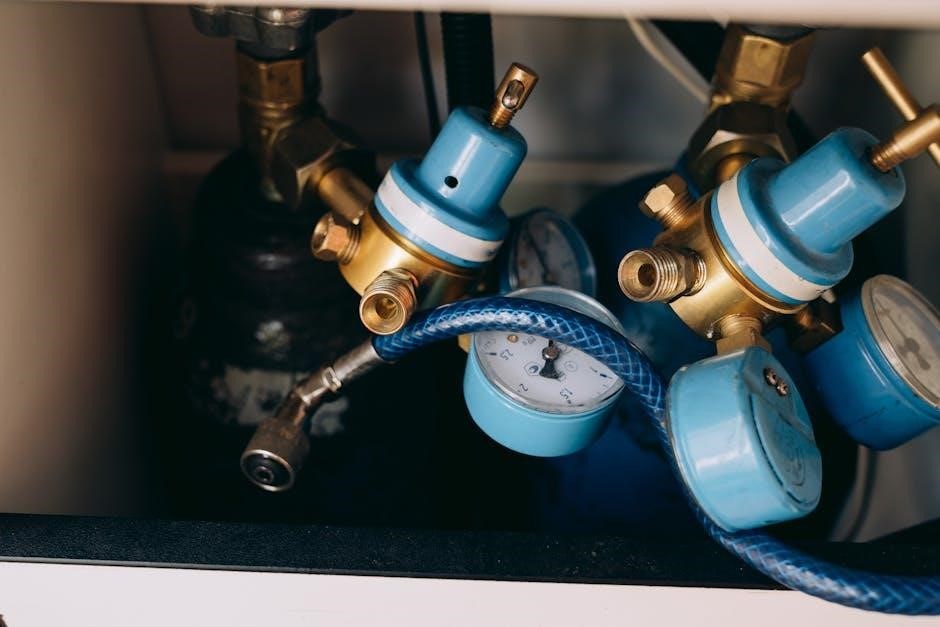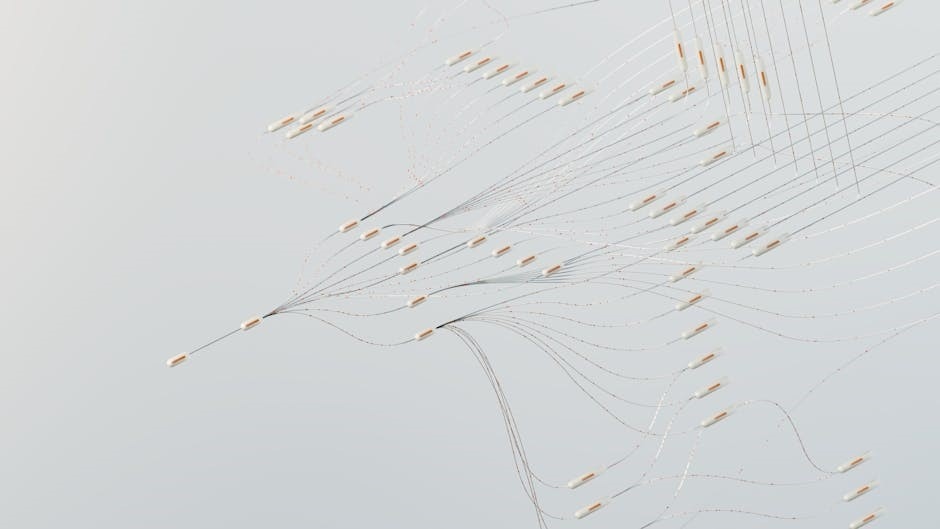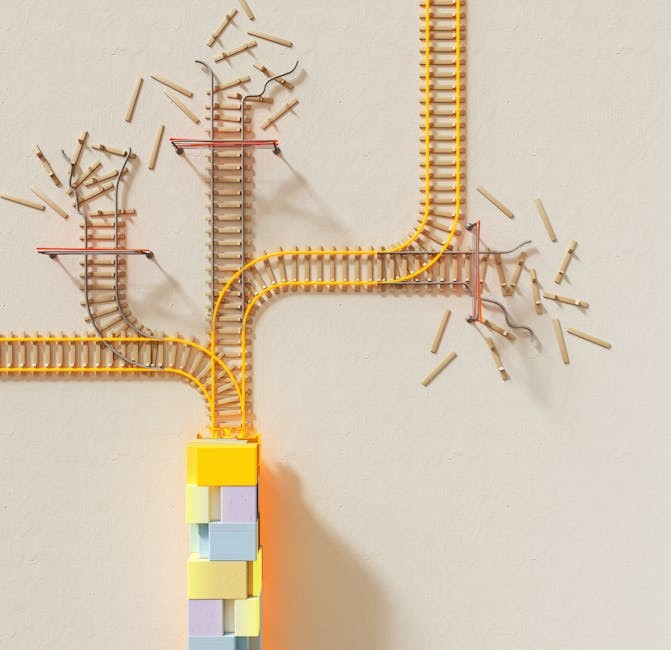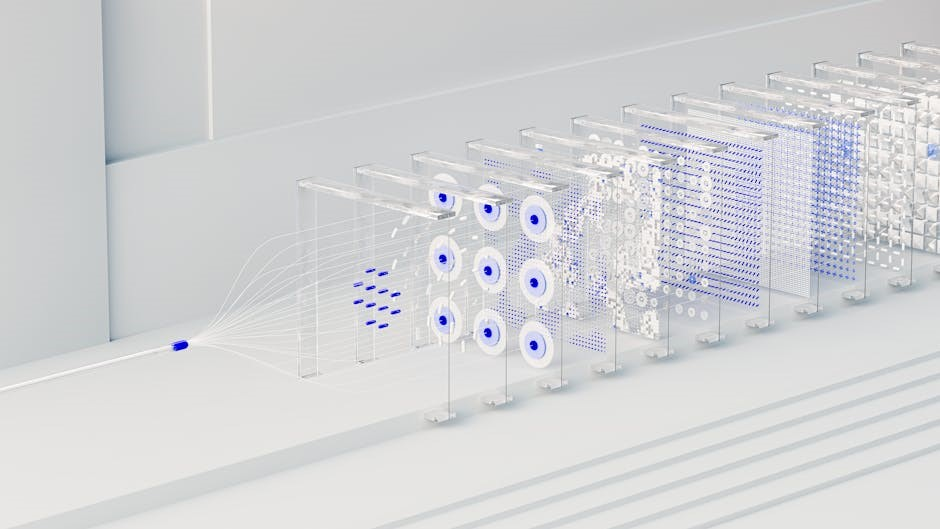The cardiovascular system, also known as the circulatory system, is a vital network responsible for transporting blood throughout the body, ensuring oxygen and nutrients reach tissues while removing waste products.
1.1 Overview of the Cardiovascular System
The cardiovascular system, comprising the heart, blood vessels, and blood, functions as a unified network to circulate blood throughout the body. It ensures oxygen and nutrients are delivered to tissues and waste products are removed. The heart acts as the central pump, pushing blood through arteries, veins, and capillaries. This system maintains homeostasis and supports cellular metabolism, immune response, and hormonal distribution. Efficient blood circulation is crucial for overall health and survival.
1.2 Importance of the Cardiovascular System
The cardiovascular system is vital for delivering oxygen and nutrients to cells and removing waste products, ensuring proper cellular function and overall health. It acts as a circulatory network, with the heart pumping blood through arteries and veins to supply tissues and organs. Additionally, it transports white blood cells to combat infections. Maintaining its health is crucial to prevent conditions like heart attacks and strokes, which can severely impact bodily functions and survival. Essentially, it serves as both a delivery and waste management system, essential for sustaining life.

Structure of the Heart

The heart is a muscular organ with four chambers: the left and right atria, and the left and right ventricles, designed to pump blood efficiently throughout the body.
2.1 Chambers of the Heart
The heart consists of four chambers: the right atrium, left atrium, right ventricle, and left ventricle. The atria are upper chambers that receive blood, while the ventricles are lower chambers that pump blood out of the heart. The right side handles deoxygenated blood, and the left side manages oxygenated blood. A septum separates the chambers, preventing the mixing of blood. This structural division ensures efficient circulation of blood through the body, maintaining proper oxygenation and nutrient delivery to tissues.
2.2 Heart Valves and Their Functions
The heart contains four valves that ensure blood flows in one direction. The mitral and tricuspid valves regulate blood flow between the atria and ventricles, while the aortic and pulmonary valves control blood exiting the ventricles into the aorta and pulmonary artery, respectively. These valves prevent backflow, ensuring efficient circulation. Proper valve function is crucial for maintaining cardiac efficiency and overall cardiovascular health.

Blood Vessels
Blood vessels are the tubes that carry blood throughout the body, ensuring oxygen and nutrients reach tissues while transporting deoxygenated blood back to the heart for oxygenation.
3.1 Arteries and Veins
Arteries and veins are two types of blood vessels that play distinct roles in the circulatory system. Arteries carry oxygen-rich blood away from the heart to various tissues, while veins return oxygen-depleted blood back to the heart. Arteries have thick, muscular walls to withstand high blood pressure, whereas veins have thinner walls and one-way valves to prevent backflow. This structural difference ensures efficient blood circulation, maintaining the body’s metabolic needs and overall health.
3.2 Capillaries and Their Role
Capillaries are the smallest blood vessels, bridging arteries and veins. Their thin walls facilitate the exchange of oxygen, nutrients, and waste products with surrounding tissues. Capillaries enable oxygen-rich blood to deliver oxygen to cells and collect carbon dioxide and other wastes for removal. Their extensive network ensures efficient diffusion, supporting cellular metabolism and maintaining tissue health. Capillaries are crucial for sustaining life, as they directly link the circulatory system to the body’s cellular functions.

Blood and Its Components
Blood is a liquid tissue composed of plasma, red blood cells, white blood cells, and platelets. It transports oxygen, nutrients, hormones, and waste products throughout the body.
4.1 Plasma and Its Functions
Plasma, the liquid portion of blood, makes up approximately 55% of its total volume. It is primarily composed of water (about 92%) and also contains proteins, nutrients, hormones, gases, waste products, and clotting factors. Plasma serves as a medium for transporting cells, nutrients, and hormones throughout the body. It helps regulate pH, temperature, and osmotic balance, ensuring proper cellular function. Additionally, plasma plays a critical role in blood clotting and maintaining blood pressure. Its functions are essential for overall health and proper bodily operations.
4.2 Red Blood Cells, White Blood Cells, and Platelets
Red blood cells (RBCs), or erythrocytes, are responsible for carrying oxygen throughout the body via the hemoglobin protein. White blood cells (WBCs), or leukocytes, play a crucial role in the immune system by fighting infections and diseases. Platelets, or thrombocytes, are essential for blood clotting, preventing excessive bleeding when a blood vessel is injured. Together, these components work harmoniously to maintain oxygen delivery, immune defense, and hemostasis, ensuring proper bodily functions and overall health.

Functions of the Cardiovascular System
The cardiovascular system functions to circulate blood, supplying oxygen and nutrients to tissues and removing waste products, maintaining homeostasis and enabling cellular functions.
5;1 Transport of Oxygen and Nutrients
The cardiovascular system plays a crucial role in transporting oxygen and essential nutrients to cells throughout the body. Red blood cells, rich in hemoglobin, carry oxygen from the lungs to tissues. Meanwhile, nutrients absorbed from the digestive system are circulated via the bloodstream, ensuring proper cellular function. This efficient delivery system maintains energy production, supports growth, and sustains overall health. The heart, arteries, veins, and capillaries work collectively to ensure oxygen and nutrients reach every cell efficiently.
5.2 Removal of Waste Products
The cardiovascular system efficiently removes waste products from the body. Deoxygenated blood carries carbon dioxide and other metabolic wastes to the lungs for exhalation. Additionally, the bloodstream transports waste materials, such as urea and toxins, to organs like the liver and kidneys for filtration and excretion. This process ensures detoxification and maintains cellular and organ function. The circulatory system’s role in waste removal is vital for preventing toxicity and preserving overall health, working in harmony with the excretory system.

Blood Circulation
Blood circulation is the continuous process of transporting blood throughout the body, delivering oxygen and nutrients to tissues while removing waste products efficiently.
6.1 Pulmonary and Systemic Circulation
Pulmonary circulation transports deoxygenated blood from the right ventricle to the lungs and returns oxygen-rich blood to the left atrium. Systemic circulation, meanwhile, delivers oxygenated blood from the left ventricle to tissues and organs throughout the body and returns deoxygenated blood to the right atrium. These two circuits work in tandem, ensuring efficient oxygen delivery and carbon dioxide removal. The pulmonary circuit is lower in pressure, while systemic circulation operates under higher pressure to meet the body’s metabolic demands. This dual system is essential for maintaining life and overall bodily functions.
6.2 Blood Flow and Pressure
Blood flow and pressure are critical for delivering oxygen and nutrients to tissues. Blood pressure is generated by the heart’s contractions and resistance in blood vessels. Arterioles regulate flow and pressure by dilating or constricting. Increased cardiac output or peripheral resistance raises blood pressure. The body maintains pressure homeostasis through neural and hormonal mechanisms, ensuring adequate perfusion of organs. Abnormal blood pressure, such as hypertension, can lead to cardiovascular issues. Understanding blood flow dynamics is essential for diagnosing and managing conditions like shock or atherosclerosis.

Regulatory Mechanisms
Regulatory mechanisms maintain cardiovascular homeostasis through intricate processes. The autonomic nervous system and hormones like adrenaline adjust heart rate, vessel diameter, and blood pressure to ensure optimal blood flow and overall health.
7.1 Nervous and Hormonal Regulation
The cardiovascular system is regulated by both the nervous and hormonal systems. The autonomic nervous system, comprising sympathetic and parasympathetic divisions, controls heart rate and vessel tone. Sympathetic stimulation increases heart rate and blood pressure, while parasympathetic activity promotes relaxation. Hormones like adrenaline and aldosterone also play crucial roles, with adrenaline enhancing cardiac output and aldosterone regulating blood volume. This dual control ensures rapid responses to physiological demands, maintaining homeostasis during rest, stress, or physical activity.
7.2 Role of the Autonomic Nervous System
The autonomic nervous system (ANS) regulates involuntary functions of the cardiovascular system. The sympathetic nervous system increases heart rate, contractility, and vascular tone, preparing the body for stress. In contrast, the parasympathetic nervous system promotes relaxation, reducing heart rate and promoting vasodilation. The ANS responds to stimuli like blood pressure changes or emotional states, maintaining cardiovascular homeostasis. This dual control ensures efficient blood flow and pressure adjustments, essential for daily activities and overall health.
Common Cardiovascular Disorders
Common cardiovascular disorders include heart failure, coronary artery disease, and hypertension, which are major causes of morbidity and mortality. They often result from poor diet, lack of exercise, and genetic factors.
8.1 Heart Diseases and Conditions
Heart diseases include coronary artery disease, heart failure, arrhythmias, cardiomyopathy, and heart valve disorders. These conditions often result from plaque buildup, high blood pressure, or genetic factors. Coronary artery disease limits blood flow to the heart, leading to angina or myocardial infarction. Heart failure occurs when the heart cannot pump blood effectively, causing fatigue and swelling. Arrhythmias are irregular heartbeats that can be harmless or life-threatening. Cardiomyopathy weakens the heart muscle, while valve disorders disrupt blood flow. Early diagnosis and treatment are crucial to manage these conditions and improve quality of life. Lifestyle changes, such as a healthy diet and quitting smoking, can reduce risk factors.
8.2 Vascular Diseases and Their Impact
Vascular diseases affect blood vessels, disrupting blood flow and oxygen delivery. Conditions include atherosclerosis, peripheral artery disease, and aneurysms. Atherosclerosis involves plaque buildup in arteries, narrowing them and increasing heart attack or stroke risk. Peripheral artery disease reduces blood flow to limbs, causing pain and mobility issues. Aneurysms are dangerous bulges in blood vessel walls that may rupture. These diseases often result from high blood pressure, diabetes, or smoking. Untreated, they can lead to organ damage or failure. Early detection and lifestyle changes, such as diet and exercise, can manage symptoms and improve outcomes.

Diagnostic Tests and Procedures
Various diagnostic tests, such as ECGs, echocardiograms, and stress tests, help assess cardiovascular health. Angiography and blood tests provide insights into blood vessel function and overall circulatory well-being.
9.1 ECG, Echo, and Stress Tests
An electrocardiogram (ECG) measures heart electrical activity, detecting irregular rhythms or damage. Echocardiograms use ultrasound to visualize heart structure and function, assessing valve and chamber health. Stress tests, often conducted on a treadmill, evaluate heart performance under physical exertion, revealing potential ischemia or arrhythmias. These non-invasive tools are essential for diagnosing heart conditions, guiding treatment, and monitoring cardiovascular health effectively.
9.2 Angiography and Blood Tests
Angiography involves injecting a contrast agent into blood vessels to visualize them on X-rays, helping identify blockages or abnormalities. Blood tests measure components like cholesterol, glucose, and cardiac enzymes, providing critical insights into heart health. These tests help diagnose conditions such as coronary artery disease, high cholesterol, or heart damage. They are essential for guiding treatment decisions and monitoring cardiovascular health effectively.

Tips for a Healthy Cardiovascular System
A healthy cardiovascular system can be maintained through a balanced diet, regular exercise, avoiding smoking, managing stress, and limiting alcohol consumption to promote overall heart well-being.
10.1 Diet and Lifestyle Modifications
A heart-healthy diet focuses on fruits, vegetables, whole grains, lean proteins, and healthy fats, while minimizing processed foods and excess salt. Incorporating omega-3 rich foods like fish can reduce inflammation. Regular physical activity, such as walking or swimming, strengthens the cardiovascular system. Maintaining a healthy weight and avoiding smoking are crucial. Limiting alcohol intake and managing stress through meditation or yoga also supports heart health. These modifications collectively reduce the risk of cardiovascular diseases and promote long-term well-being.
10.2 Exercise and Stress Management
Regular exercise strengthens the heart and improves circulation, enhancing overall cardiovascular health. Aerobic activities like walking, cycling, or swimming for at least 30 minutes daily are recommended. Strength training can also contribute to muscle tone and metabolism. Managing stress through techniques such as deep breathing, yoga, or meditation reduces cortisol levels, which can strain the heart. Balancing physical activity with mental relaxation helps maintain a healthy heart rhythm and lowers blood pressure, promoting long-term cardiovascular well-being and reducing the risk of chronic diseases.
The cardiovascular system is vital for delivering oxygen, nutrients, and removing waste, ensuring optimal bodily functions. Maintaining a healthy lifestyle through diet, exercise, and stress management is crucial for long-term heart well-being and overall health.
11.1 Summary of Key Points
The cardiovascular system consists of the heart, blood vessels, and blood, working together to transport oxygen, nutrients, and hormones while removing waste products. It plays a critical role in maintaining homeostasis, regulating body temperature, and enabling cellular function. The heart acts as a pump, with chambers and valves ensuring efficient blood flow. Blood vessels, including arteries, veins, and capillaries, facilitate circulation, while blood components like red and white blood cells and platelets perform essential functions. A healthy lifestyle, including a balanced diet, regular exercise, and stress management, is vital for maintaining cardiovascular health and preventing diseases.
11.2 Importance of Maintaining Cardiovascular Health
Maintaining cardiovascular health is crucial for overall well-being. The cardiovascular system delivers oxygen and nutrients to cells while removing waste products. Poor cardiovascular health can lead to heart disease, strokes, and other serious conditions. Regular exercise, a balanced diet, and avoiding smoking and excessive alcohol help maintain a healthy heart. A healthy cardiovascular system improves quality of life, increases longevity, and reduces the risk of chronic diseases. Additionally, it supports proper brain function and reduces the risk of kidney disease, ensuring optimal bodily functions.



